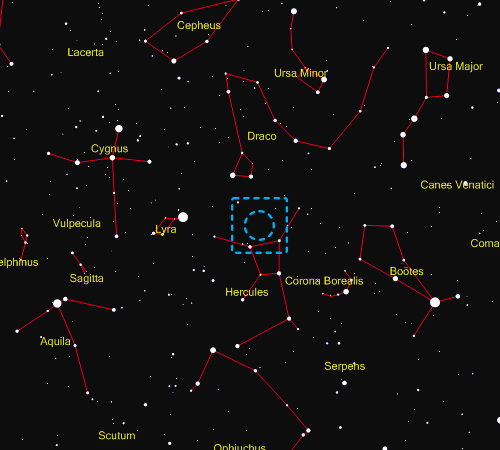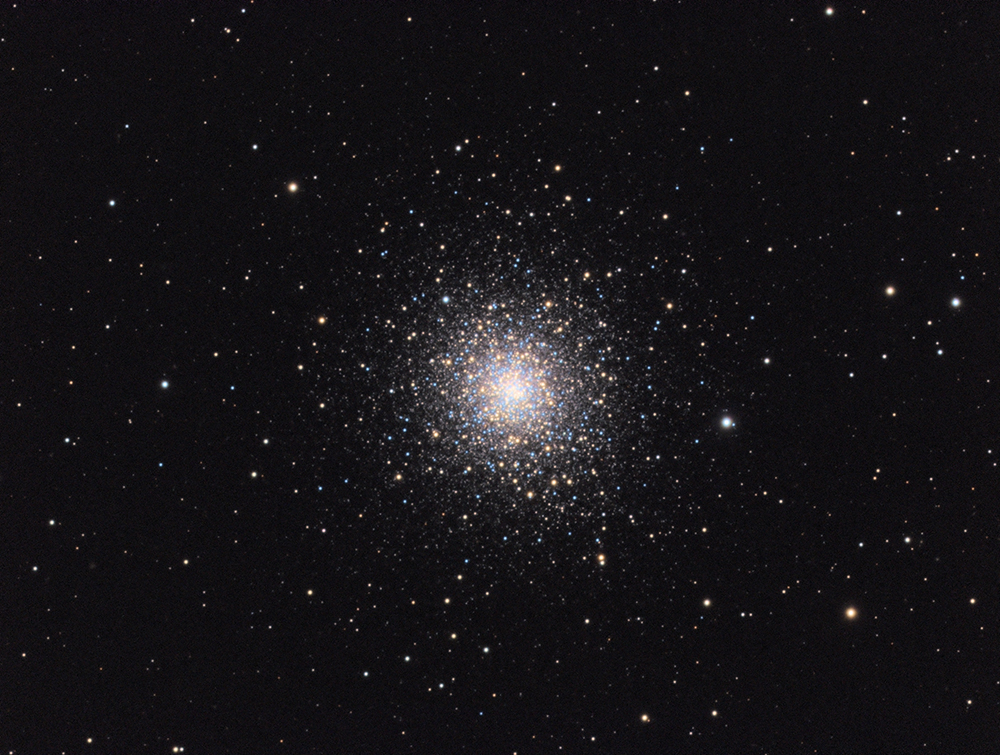Messier 92 is a globular cluster located around 27,000 light years away in the constellation of Hercules, just above the Keystone asterism. It is often overlooked due to the nearby and more conspicuous M13, the Great Hercules Cluster. M92, with a magnitude of +6.4, is just observable to the naked eye in good seeing conditions, appearing as a faint fuzzy grey patch.
M92 is the oldest globular cluster in the Milky Way; it is estimated to be 14.2 billion years old, with an uncertainty of 1.2 billion years. This is curious given the estimated age of the Universe itself is 13.8 billion years. Where was M92 before the Universe began?! What is certain is that M92 formed in the very early Universe; we can tell this due to the cluster’s low metallicity content. To astronomers, metals are all elements heavier than hydrogen and helium. Messier 92 has just 0.5% of the Sun’s metallicity as it is made almost entirely of hydrogen and helium. The abundance of metals in an object can be used to date it, as the proportion of metals increases with time.
Messier 92 was discovered in December 1777 by astronomer Johann Elert Bode, who described it as ‘more or less round with pale glow’. Charles Messier independently discovered and catalogued M92 on 18th March 1781. Messier described it as ‘a nebula, fine, distinct and very bright. It contains no star. The centre is clear and brilliant, surrounded by nebulosity, resembling the nucleus of a large comet’. It was first resolved into stars by William Herschel in 1783 using his home-made seven-foot telescope. Messier 92 contains around 250,000 stars and has an estimated mass of about 300,000 solar masses. It is blue shifted and is approaching at about 110 km/s. Due to precession, the North Celestial Pole is moving away from its current position just half a degree from the star Polaris and will come within a degree of M92 in around 14,000 years.
M92 is classified as an Oosterhoff type II globular cluster, meaning that it is a metal poor cluster and contains longer period variable stars of the RR Lyrae type. The 1997 'Catalogue of Variable Stars in Globular Clusters' listed 28 candidate variables, of which 20 have been confirmed, including 17 RR Lyrae variables and a W Ursae Majoris type variable, an eclipsing binary star whose components share material and are in contact with one another. In addition, ten X-ray sources have been identified within the central part of the cluster, half of these are thought to be cataclysmic variables. |


